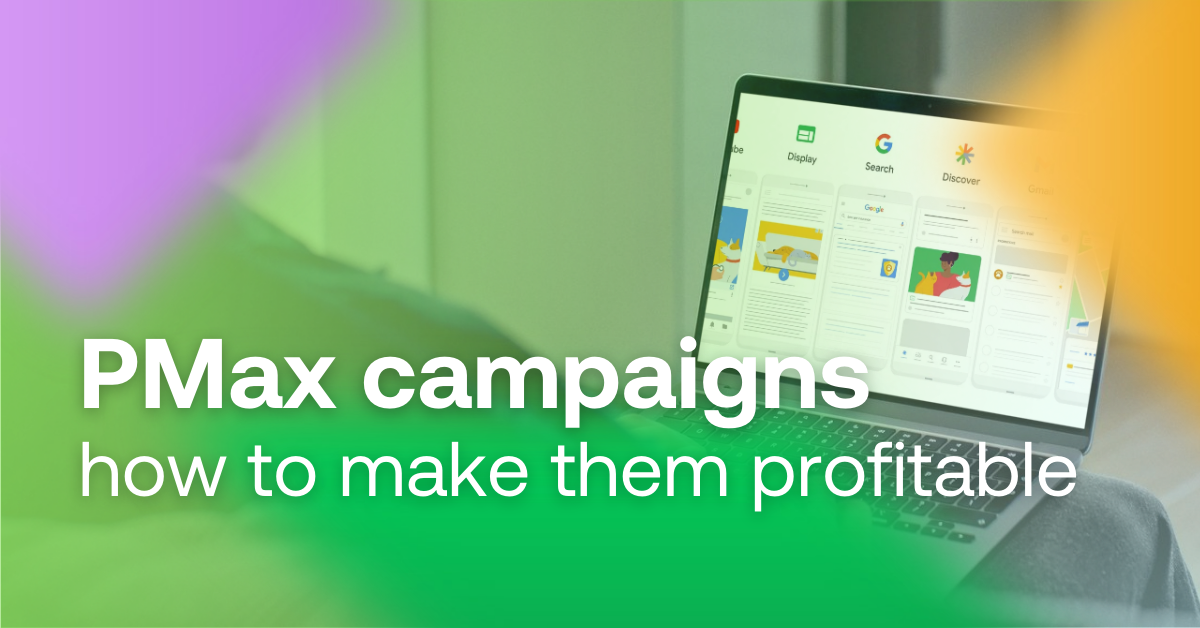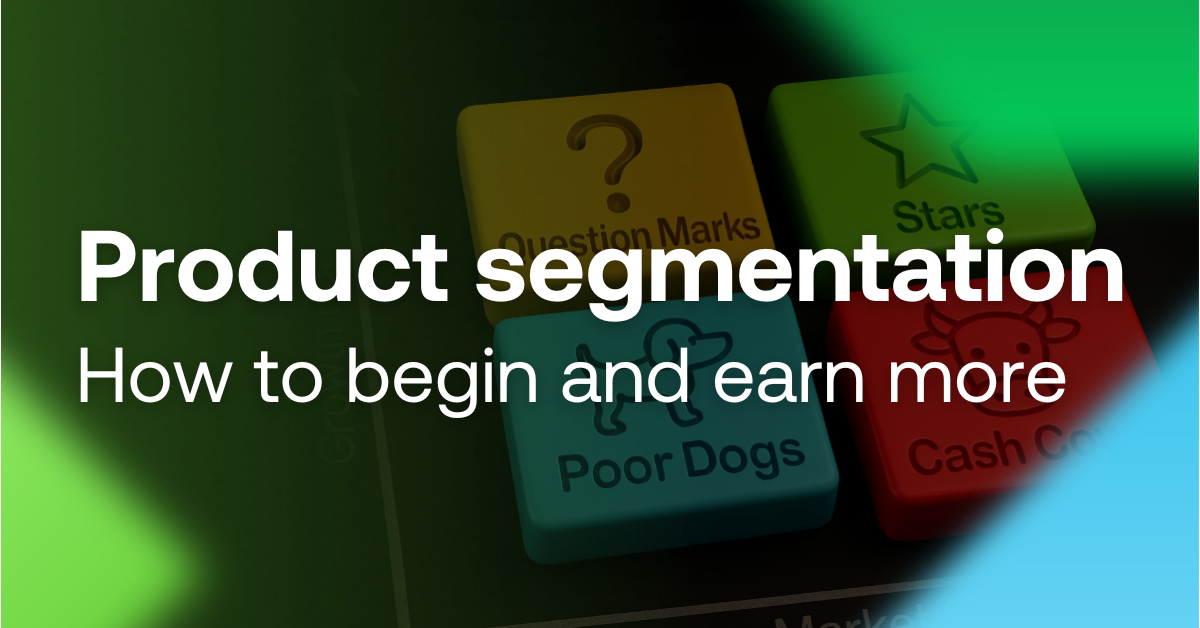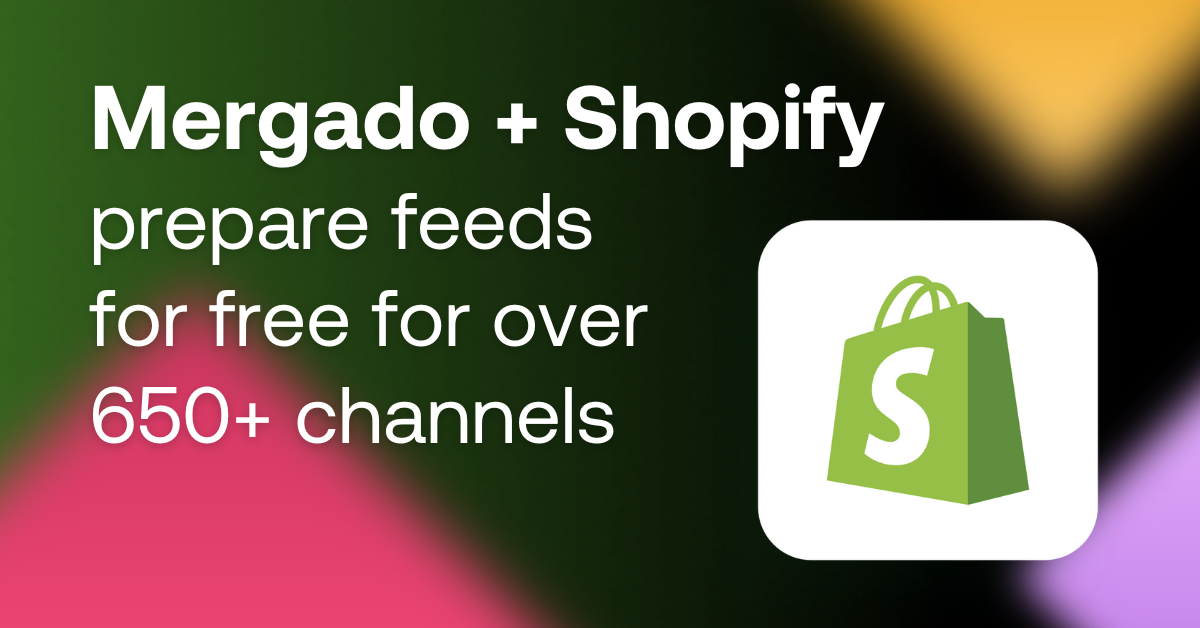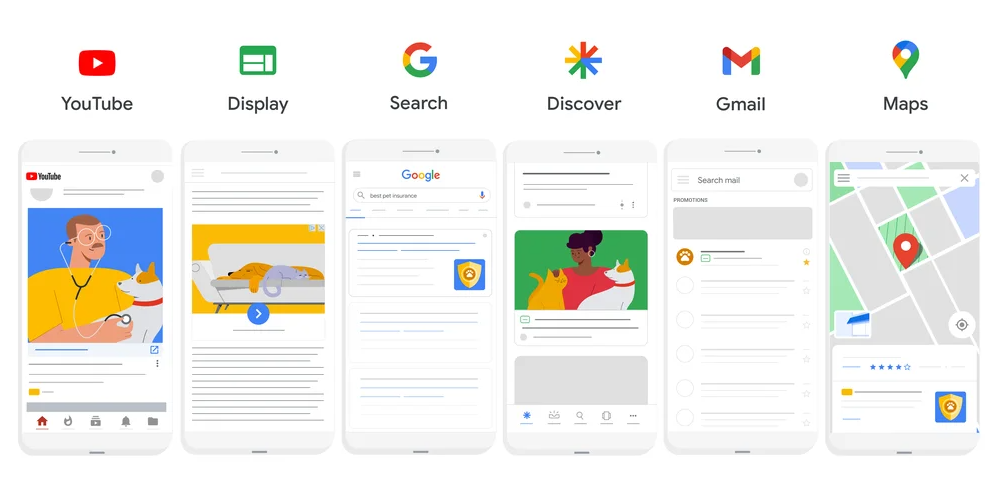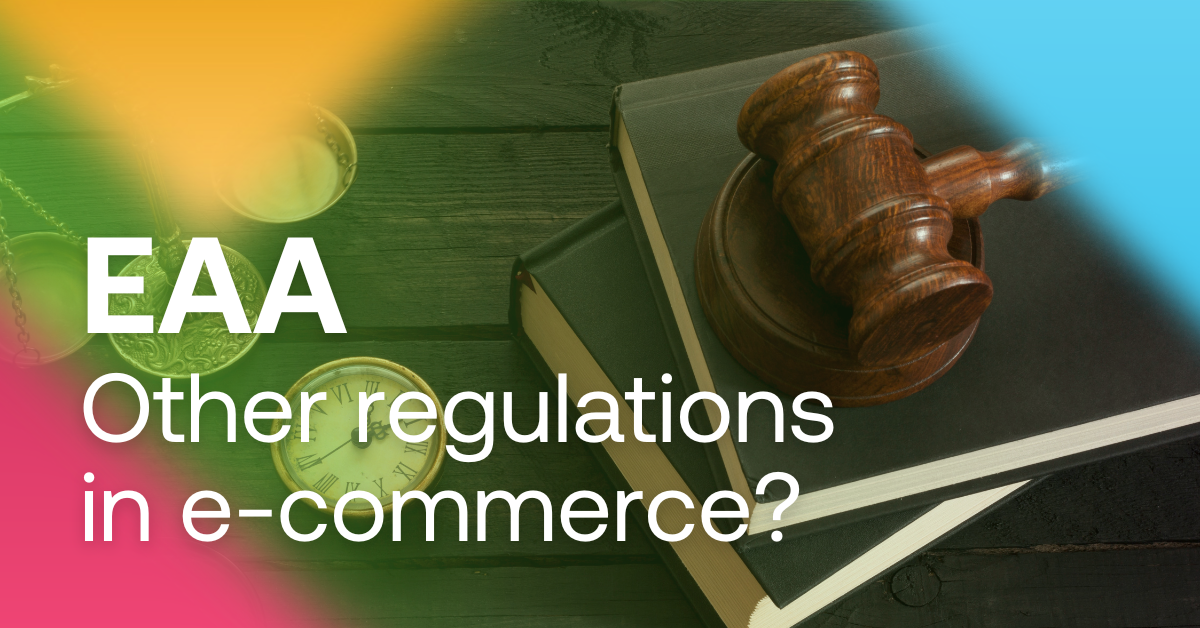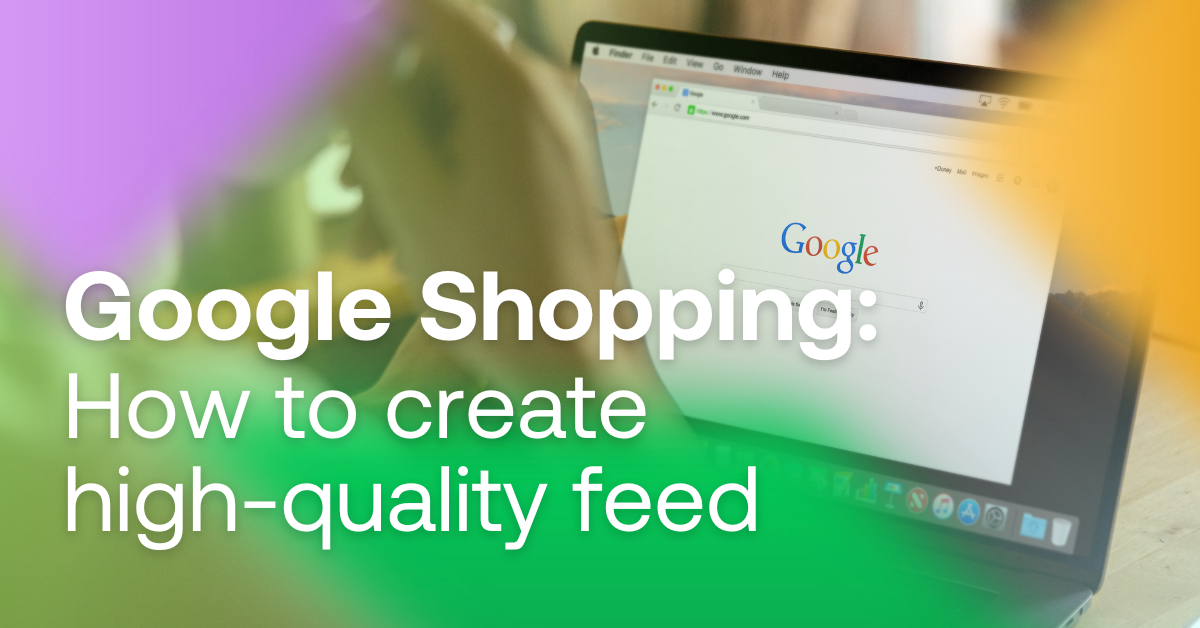Why so many advertisers are switching to PMax
Performance Max in Google Ads is like a Swiss Army knife – it combines all available advertising channels into a single campaign. Instead of creating a separate ad for each format, you just provide Google with a “package” of assets (texts, images, videos, products…) and it takes care of the rest.
How does it manage that? These campaigns run on machine learning. The system continuously learns from results and automatically adjusts the strategy to deliver the best possible performance. In the ideal case, you don’t need to fuss over the campaign too much. But — and here’s the catch—without quality input data, this magic doesn’t work. And if you lose control over the campaign, it can easily end up costing you more than it brings in.
Advantages and disadvantages of PMax: what to watch out for
At first glance, PMax campaigns sound great – one campaign, maximum reach, minimal manual work. And indeed, for many advertisers, they work very well. You get access to every corner of Google advertising (Search, YouTube, Display Network, Gmail, Maps…), you don’t need to deal with complex settings, and you can easily test new formats, like video. For e‑shops, PMax also offers the option to target new customers or maximize order value through Smart Bidding.
But this automation has its downsides. If you don’t set up exclusions so that your ads don’t show on brand queries, PMax has a tendency to “cannibalize” the performance of your other campaigns — without warning. Also keep in mind that if you don’t provide quality inputs (especially videos and other assets), it will build the ads itself. And with video in particular, that often ends up with unusable auto-generated outputs.
For PMax to gain traction, it needs time and data. In the first weeks, performance may be weaker and conversions more expensive. The system first collects data, learns, and only then starts optimizing. So if you expect results right away and don’t have at least a few thousand per month to spend, you’re likely to be disappointed.
Does PMax Make Sense Despite Its Drawbacks?
When we sum it up, there are plenty of pros and cons. On paper, it might look like the negatives outweigh the positives, but in reality, it all depends on who is using PMax and how.
If you expect to set up a campaign in 15 minutes and let it run without supervision, you’ll probably run into trouble. But if you have solid data, a variety of creative assets, and at least a basic strategy, PMax can turn into a powerful engine that brings you conversions without the need to click around the interface every day. It does require a bit of patience in the beginning, but in return, it saves you time and helps you grow.
How Does PMax Work with Data and Why Does It Matter?
The strength of PMax campaigns doesn’t lie in Google’s magic, but in what you put into it yourself. Google may claim that it sets everything up and optimizes it on its own, but without quality inputs it won’t get anywhere. In other words: PMax is not a magic box, but a very smart engine that needs the right fuel.
What do we mean by fuel?
🛒 Product Feed
For e‑shops, the feed is absolutely essential. Without it, Google has no idea what you’re selling. The feed should be accurate, up-to-date, and as rich as possible – brand, GTIN, MPN, description, category, parameters… the more relevant data, the better the campaign will target. The old rule applies here as well: better data = better performance.
TIP: From our experience, PMax can generate higher order values with the same budget than a standard shopping campaign.
🎨 Creatives, a.k.a. Assets
Google builds ads from your materials depending on the format and placement. And the more diverse a palette you give it, the better mix it can create.
We recommend providing:
- up to 20 images in different formats (square and rectangle),
- 3 – 5 short headlines, 1 – 5 long headlines, 2 – 5 descriptions,
- videos – if you don’t upload any, Google will create them itself (and often they’re pretty poor),
- logos, ideally square.
🎯 Audience Signals
Unlike other campaign types, in PMax you don’t select a target audience directly. Instead, you give Google hints about the types of users you’re interested in — these are called signals.
You can use:
- Custom segments (e.g. people searching for specific keywords or visiting certain websites)
- First-party data (e.g. customer lists or website visitors)
The best approach is to combine both. Google will decide what to use. But be careful—a signal is not targeting, it’s more of a guideline.
🔗 Final URLs
By default, Google can redirect users to a different page than the one you intended — for example, from a product page to your homepage. The goal is to improve conversions, but it doesn’t always make sense. That’s why we recommend excluding pages where you don’t want to send traffic (e.g. terms and conditions or contact pages).
📈 Conversion Data
Tracking conversions is essential — without them, Google has nothing to optimize for. For PMax to perform well, your account should generate at least 100 conversions per month. If you’re below that threshold, the algorithm may struggle.
What to Prepare Before Launching the Campaign
Even though PMax is automated, launching without preparation can hurt. Before you go live, get your assets ready based on this structure:
- Asset Group = a set of headlines, descriptions, images, videos, final URLs, and a logo.
- Link each group to the relevant products from your product feed.
- You can split them by category (e.g. shoes, backpacks, handbags).
- Each group = different visuals and copy tailored to that category.
You can also add extensions such as:
- sitelinks,
- calls to action,
- lead forms.
All of these help improve your CTR and increase the likelihood of conversions.
Bonus Data Google Will Love
With the Mergado Sources app, you can enrich your product feed with data that’s not commonly available elsewhere — and these can give your PMax campaigns a real boost.
For example:
- Google Ads data – Import cost, conversion, CTR, or revenue data directly into your feed in Mergado and build product selections based on it (e.g. top-performing ROAS). No need for custom scripts, and your data will always update reliably — unlike scripts that can fail to run over time.
- OpenAI integration – Generate texts based on parameters (e.g. product descriptions or category rewrites).
- Google Search Console or Icecat – Use performance data from your website or enhance product details with additional attributes.
Simply put: the richer and more accurate your input data, the better performance you can expect from PMax.
Tips for Optimizing PMax Campaigns
Even though it might seem fully hands-off, PMax is not a “set it and forget it” type of campaign. Automation saves time, yes — but without ongoing care, you won’t see great results.
Here’s a checklist of what you should monitor and test regularly (and why it matters):
📊 Monitor Asset Group Performance
Google evaluates the performance of each individual asset and labels them as Low, Good, or Best. Your goal is to maximize the number of Best assets and eliminate the weaker ones. Also, regularly monitor metrics like CTR, conversions, and ROAS — these are available directly in your campaign stats.
📍 Placement Check
By default, Google can show your ads on websites or apps that may not be a good fit for your brand. Check the Placements report and exclude any inappropriate sources. Note: This is done at the account level.
🧠 Leverage Insights and Reports
After collecting a few dozen conversions, the Insights tab will start showing targeting data — such as which audiences, topics, or search queries are driving conversions. Use this information to refine your assets, audiences, or to restructure your campaign.
⚠️ Watch Out for Performance “Cannibalization”
PMax can steal conversions from your other campaigns, especially branded ones. Make sure to exclude your brand keywords from PMax to prevent overlap.
🧪 Test Different Asset Variations
PMax thrives on variety. Test multiple versions of images, headlines, and descriptions. Create several Asset Groups, divided by categories or seasons. Each group can have different products and tailored messaging.
🧩 Segment Your Audiences Too
Have bestsellers? Create an audience of users who bought them in the last 7 – 14 days.
This allows Google to target more accurately — toward users similar to your highest-value customers.
🕒 What Not to Do: Don’t Make Frequent Changes
Every change — like tweaking copy or adjusting budget — can reset the learning phase.
Increase budgets slowly, by no more than 50% every two weeks.
